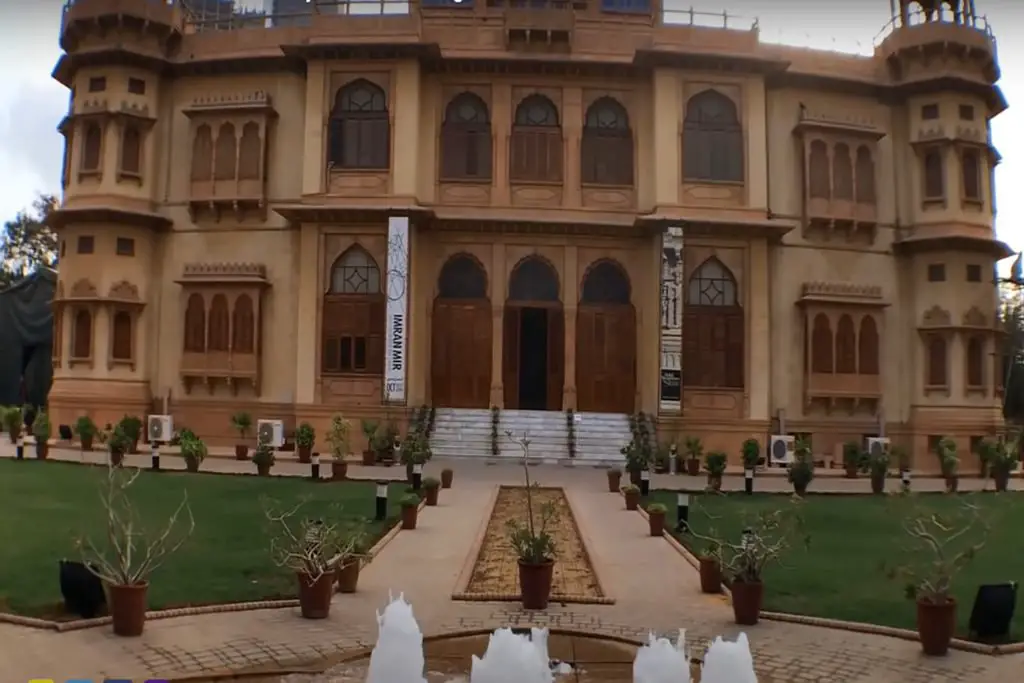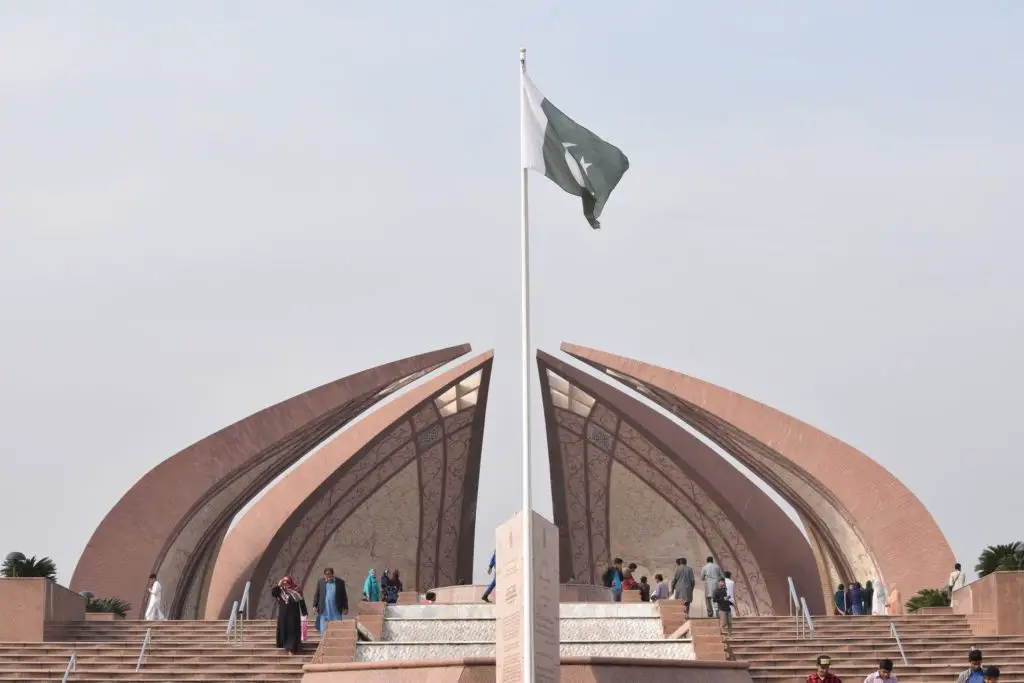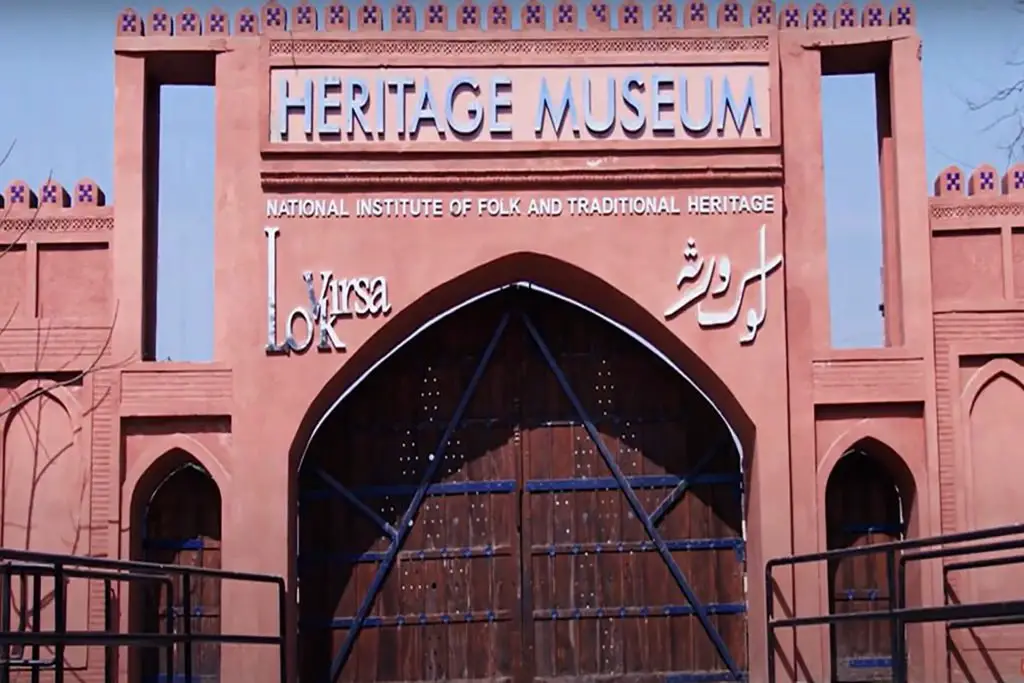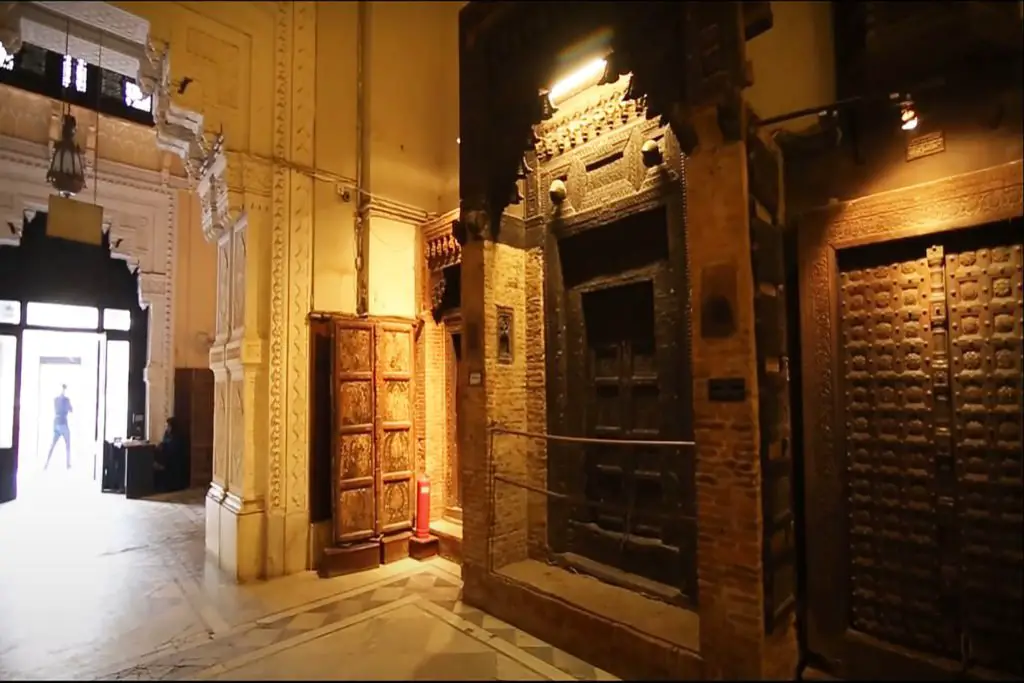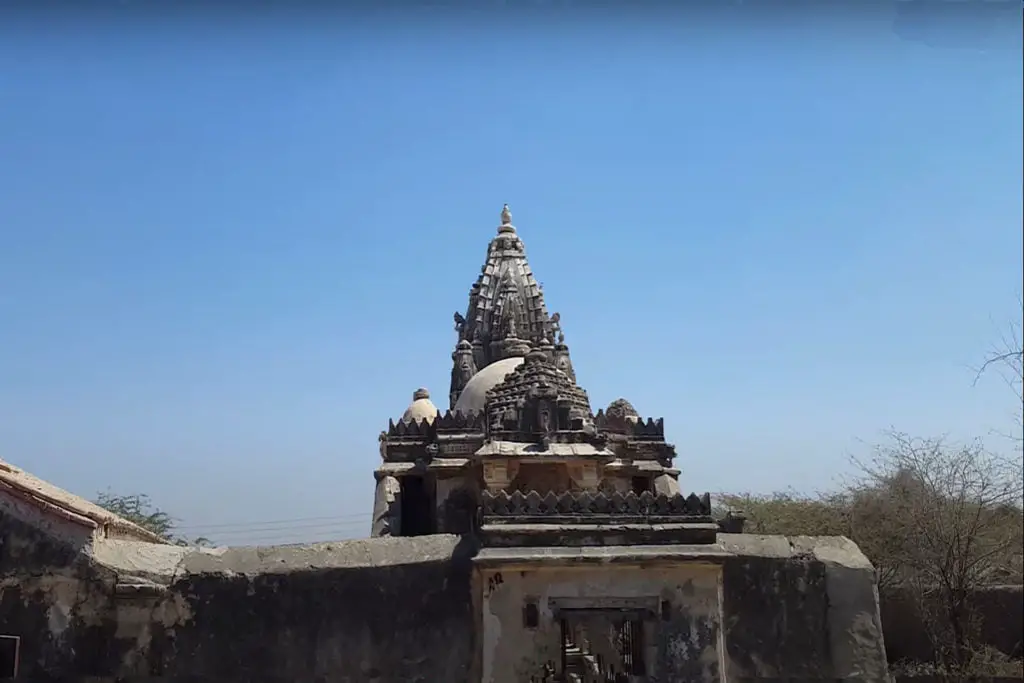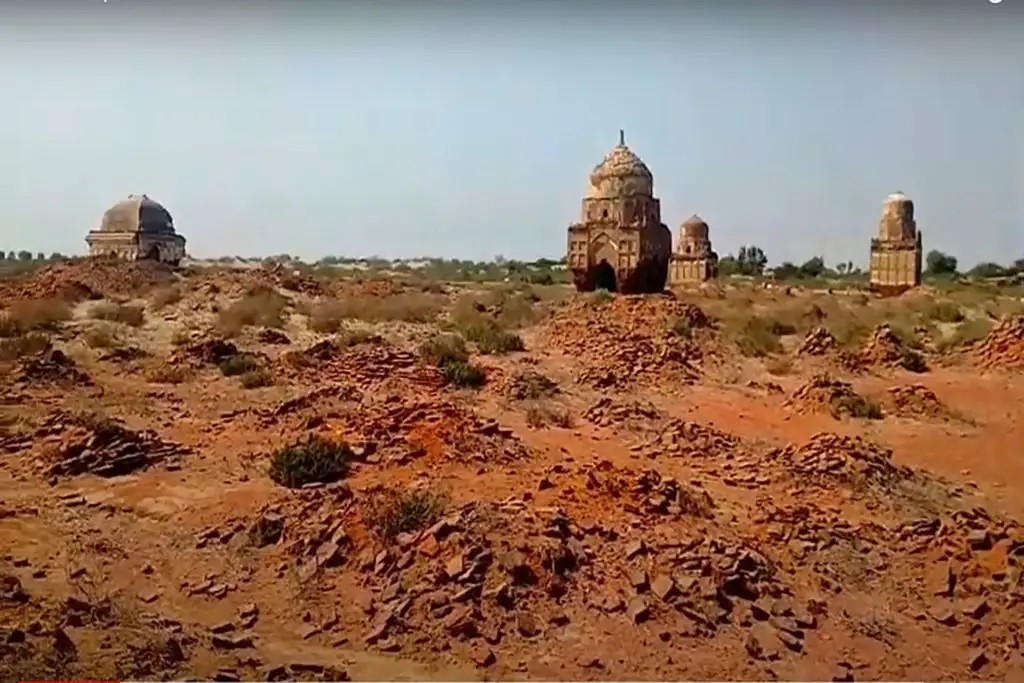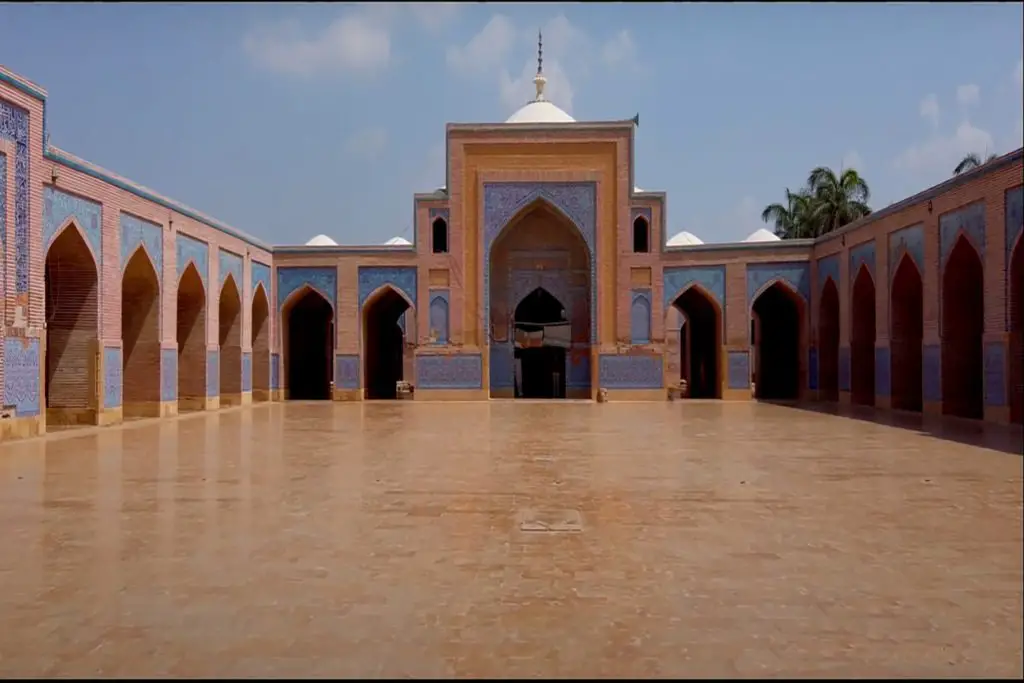In 1927, Shiv Rattan Mohatta, a successful Marwari businessman, commissioned a palatial house in the affluent seaside district of Clifton. Mohatta made his fortune as a ship handler and merchant. The architect commissioned for his palace, Ahmed Hussein Agha, was one of the first Muslim architects in India and came from Jaipur to accept the assignment as Chief Inspector for the Karachi municipality.
Ahmed Hussein Agha designed many buildings in Karachi, but the Mohatta Palace was to prove the coup de grace of his professional career. Working in the Mughal Revival style with a combination of locally available yellow Gizri and pink stone from Jodhpur, he sought to recreate the Anglo-Mughal palaces of the Rajput princes.
Mohatta Palace Museum History & Restoration
After Partition in 1947, Mohatta Palace was acquired by the newly established Government of Pakistan as the seat of its Ministry of External Affairs. When the foreign ministry moved to Islamabad in 1964, the palace was given to Mohtarma Fatima Jinnah. After her demise in 1964, her sister Shireen Bai lived here until she died in 1980.
The property then became embroiled in litigation and remained sealed until 1995, when it was formally purchased by the Sindh government in association with the Federal Government for an amount of six million rupees. It was agreed that the memorial would house a museum to promote awareness and appreciation of the cultural heritage of Pakistan and the region. An autonomous board was established to oversee the restoration and adaptive use of the monument.
The first two stages of the restoration program were completed in August 1999, and the museum opened its doors to the public on 15 September 1999. Since then, it has held many major exhibitions featuring never-before-seen artifacts; these thematic exhibitions were selected from public and private collections. The museum grew from three galleries in 1999 to forty-four in 2005.
Mohatta Palace Museum: Present
The Mohatta Palace Museum is a source of pride for the citizens of Karachi as it strives to become a museum of international stature and a beacon of hope and commitment to the city. None of this would have been possible without the support of the Federal Government, the Government of Sindh, and our key donors who share our vision of a symbol of Karachi’s cultural renaissance.
Can we visit Mohatta Palace?
The Mohatta Palace Museum offers a diverse range of activities for both the casual and informed visitor. Families and school children are especially welcome, and tours can be arranged in advance. Please Note that the Videography is strictly prohibited inside the Building.
It is a fact that during British rule and even after the Declaration of Independence, no beautiful building like the Mohatta Palace was built in the country. Built-in the Clifton area just 14 years before the creation of Pakistan, the palace is still a center of attraction.

Mohatta Palace Museum, Interior & Design
The pink stones used in the construction of the Palace were specially ordered from Jodhpur, Rajasthan, India. Pictorial flashes of flowers and birds have been carved in an eye-catching manner.
This two-story grand palace, consisting of 16 rooms, also has an interesting cultural history. Before the creation of Pakistan, Rai Bahadur Shivratan Chandraratan Mohatta was one of the richest Hindu merchants in Karachi. His family migrated from Calcutta and settled in the city. He had a good reputation in sailing and shipbuilding.
What is Mohatta Palace famous for?
Mohatta deeply loved his wife who was suffering from a terminal illness. Knowing that the sea climate could improve her health, he decided to build a magnificent palace for his wife in Karachi on the shores of the Arabian Sea. And so a famous palace in the history of the subcontinent was built on the banks of Clifton in Karachi called the Mohatta Palace.
Rai Bahadur Mohatta also organized a grand celebration at the palace to celebrate his wife’s complete recovery. The distinguished guests included various dignitaries including Jamshed Nusserwanjee Mehta, the first elected mayor of Karachi.
Who lives in the Mohatta Palace?
After independence, Mohatta and his family decided to migrate from Karachi. Later, the Ministry of External Affairs was established in the palace in Karachi, the capital of the newly established state of Pakistan. The ministry remained there until the capital was moved to Islamabad. Many historical statues, including those of Queen Victoria and Jamshed Mehta’s, which were erected on roads and public places during the British era, were removed from their original places and relocated to the palace after independence.
However, there was another turning point in the history of the Mohatta Palace when the government handed over this magnificent palace to Fatima Jinnah, the sister of Quaid-e-Azam. After her mysterious death, a court battle began over the ownership of the palace. In response to petitions filed by her family, the Sindh High Court handed over the Mohatta Palace to Fatima Jinnah’s sister Shirin Jinnah. Even after her death, disputes between her family members continued, which led to the seizure of the palace by the authorities.
Once a wonderful place to visit, the palace turned into the darkness for almost a decade. During the 1990s, then Prime Minister Benazir Bhutto, at the request of the Sindh government, provided funds to the provincial cultural department for the purchase and restoration of the Mohatta Palace. It eventually became a museum and an independent board of trustees was established to look after the affairs.
However, due to the ongoing court case, the Mohatta Palace has again come under the limelight. The innumerable services of the non-Muslim community, including the Mohatta family, for the development and prosperity of Karachi, are unforgettable.
Even after the partition, Rai Bahadur Mohatta handed over his magnificent palace to the Government of Pakistan with best wishes. It is now our moral responsibility to preserve the true identity of a great cultural heritage like Mohatta Palace.

